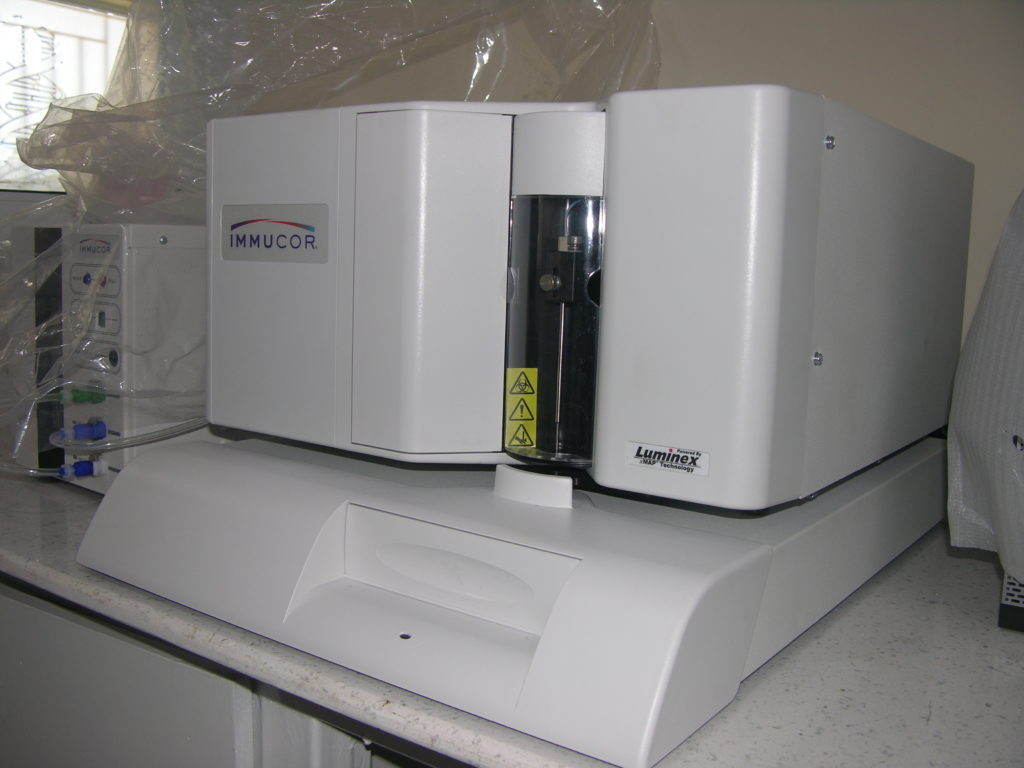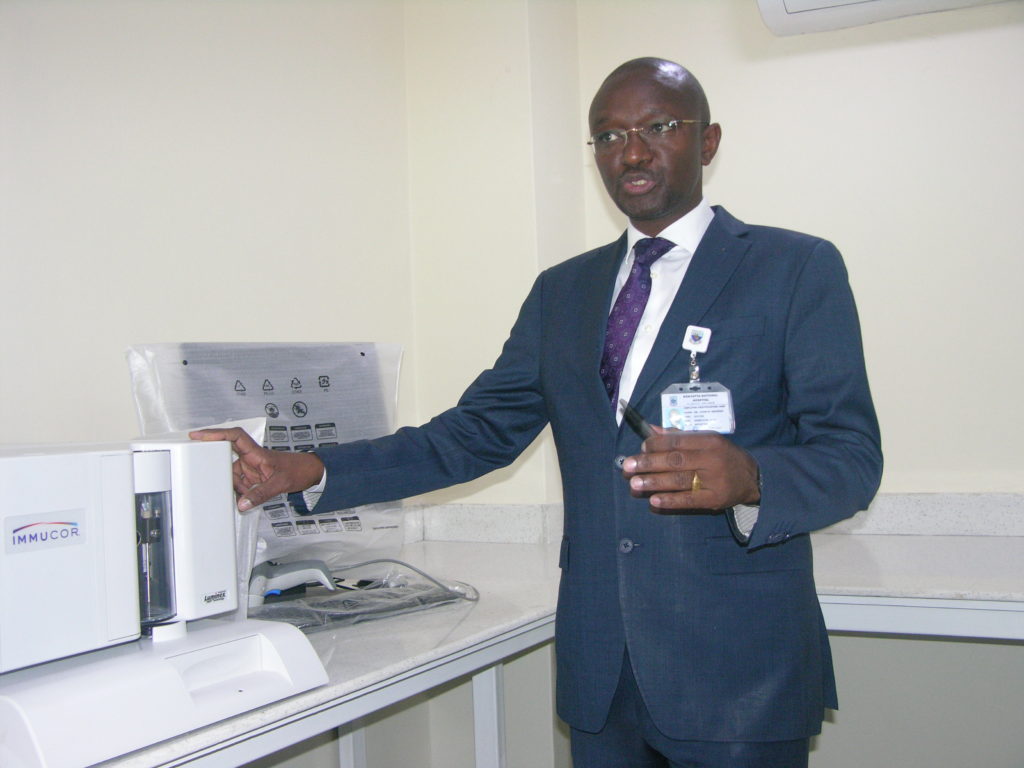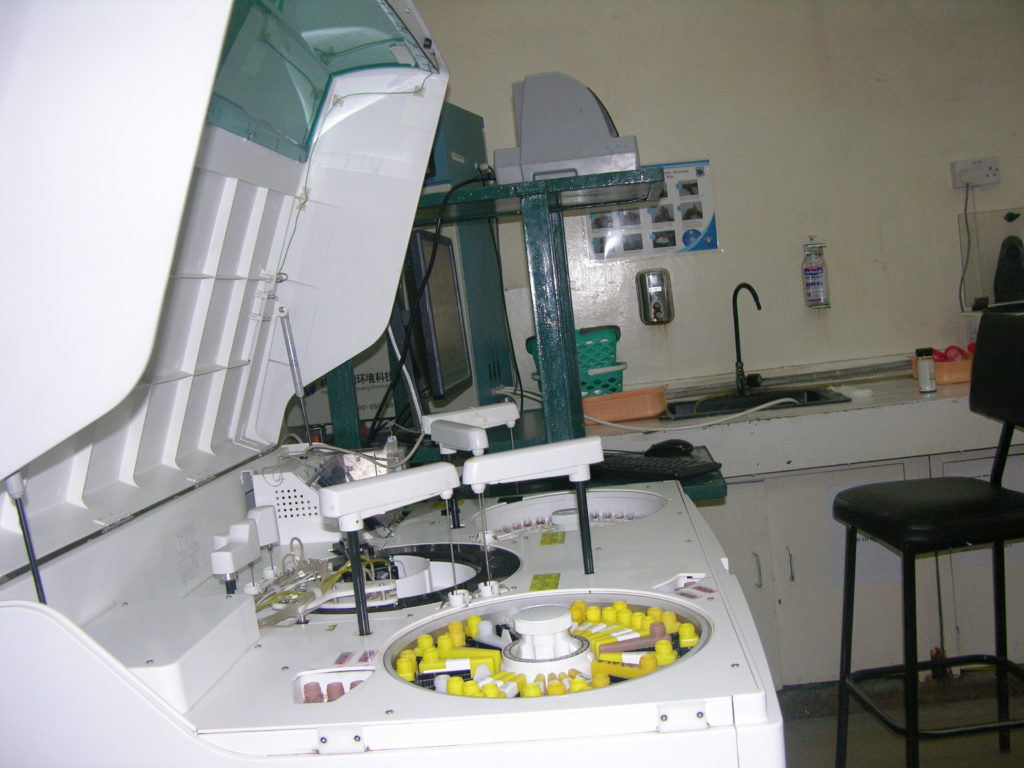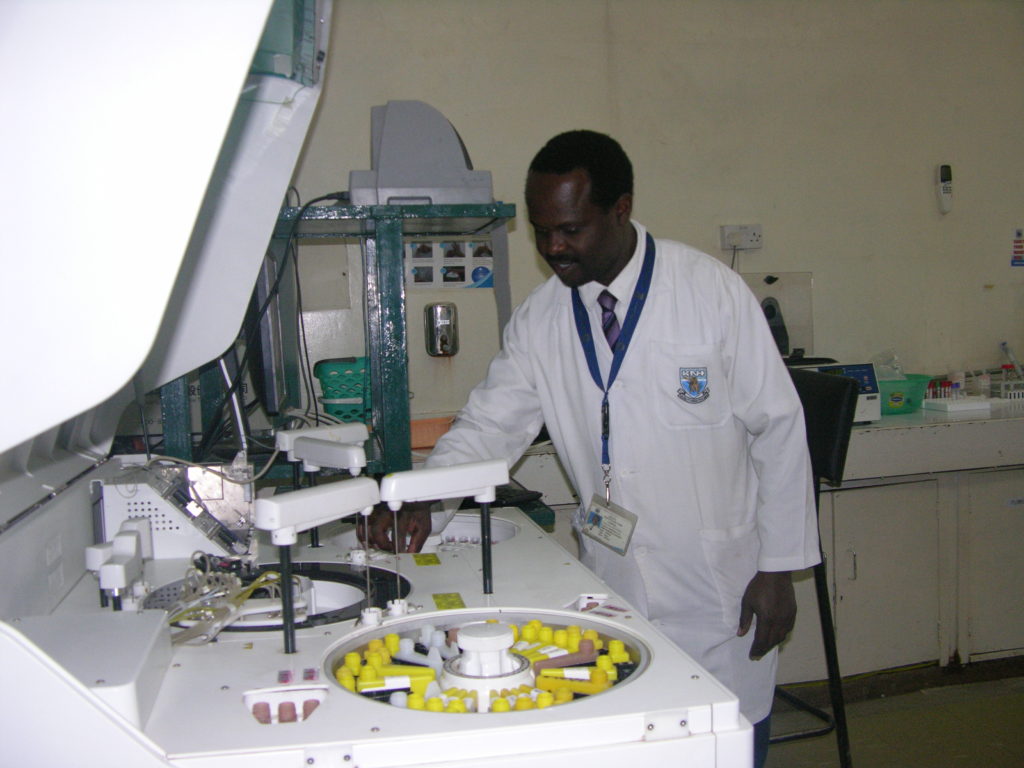|
Getting your Trinity Audio player ready...
|
By Clifford Akumu
In Dec 1954, when the first successful kidney transplant was performed in Boston, the United States of America among twins, it was a breakthrough in the field of transplantation; and an eye-opener.
But that discovery, notes Dr. John Ngigi, head of renal unit at Kenyatta National Hospital, has changed the landscape of kidney transplantation over the years by opening new avenues.
Doctors gained courage and knew they could achieve more. The search for new technology to further enhance kidney transplantation then gained momentum, including Deoxyribonucleic acid (DNA) sampling technology on people who are not related. DNA is a molecule that contains the biological instructions that make each species unique.

According to the Ministry of Health, only 466 patients have undergone transplants since 2006, in public and private hospitals in Kenya.
But all is not lost, says Dr. Ngigi. Now, a new DNA sampling technology is set to change all that. The technology will be based at Kenyatta National Hospital.
Ngigi adds that the machine that uses Luminex technology, it is a first of its kind in the country, and is aimed at reducing the cost of investigating patients by almost 96 percent since it will reduce the process of preparing one pair of patients for transplanting process.

Until the government, through the East Africa Development Bank and East Africa Kidney Institute acquired the machine for the facility, the country used to outsource the tests from South Africa and India-a process that was expensive and tedious gobbling up to Sh70, 000-80,000 for a pair-a kidney donor and the recipient and a major constraint towards transplantation process.
In South Africa, transplantation is conducted in-house hence the process takes a very short time. But in Kenya, the same process cannot take less than two weeks, “Two weeks must be used for running these tests outside. Our aim is to be efficient in our transplantation processes like in India and South Africa.”
He further explains the coming of the machine will help reduce cost drastically to about Sh30, 000 through subsidies from the government. It will also take a turnaround time of fewer than two weeks as compared to two months to get the results.
“It is the first of its kind technology in this country. And it is a game-changer in kidney transplantation because it is cheap and reduces the processing it takes to prepare one pair of patients. The machine will serve the entire East Africa, where we will run the samples for them and give them the compatibility studies to conduct transplants in their respective countries,” said Ngigi.
According to the National Health Insurance Fund, about 4,300 Kenyans are undergoing dialysis in 151 centers across the country. Last year, KNH announced that 2,000 of those people were on its waiting list for transplants. But the hospital only conducts about 15 transplants a year.
And with many transplant patients undergoing expensive dialysis after donors pull out at the last minute, Ngigi notes, it is cost-effective to increase access to transplantation to kidney patients than to be on dialysis.
Currently, KNH has about 180-200 patients on chronic immune dialysis and 50 percent of them are transplantable(about 100 patients). But lack of donors, money and patient awareness is hindering the process.
Over the last ten years, the referral facility has successfully transplanted almost 205 patients.

“Look at it economically; every month, patients spend around Sh80, 000 to be on dialysis…If broken further, NHIF pays, Sh9, 500 per one session and you do two sessions patients end up paying Sh20, 000 times four and that comes to around Sh80, 000 plus some hidden costs.”
It costs between Sh500, 000-600,000 to do kidney transplantation at the KNH. But how does technology works? “We get blood from the donor and recipient. Then you proceed to extract the DNA of the samples pair. They are then matched to find whether they are compatible. And then you look whether the recipient might have developed antibodies against the donor ….And at this point, we now know for sure that these patients are related.”
He decried the estimates showing that 4 million Kenyans have chronic kidney disease with a significant proportion of this population progressing to kidney failure adding that diabetes and high pretension are now becoming a major cause among the population.
Changes in lifestyle and eating habits are to blame for the rise in diabetes and high hypertension. “The commonest cause of kidney failure in our population is chronic kidney Diseases (CKD)-. But now over time, many more patients than we are seeing e.g. the middle age to the elderly from age 45 upwards are coming up with diabetes and hypertension as the principal cause of their kidney failure requiring them to go for dialysis,” he noted.
“It is said that non-communicable diseases are now catching up with us in the kidney arena.”

However, among the younger age groups from 18-40years, many of them continue to have chronic kidney Disease as a cause of kidney failure. “But there are other causes of kidney failure that we see in this group including obstruction from prostate or cervical cancer.”
He cautions that patients with obstructive problems are not available for transplantation. For women, a small population still presents what he calls “autoimmune conditions” like systemic lupus-What is it? This leads to lupus nephritis which is common to women with 9 out of 10 in a population are women.
“We get all these conditions. For us, the most important thing is whether these patients can be transplanted or not? For those who cannot be transplanted, then we pool them for dialysis and encourage them to continue with the program, but for those, who we can transplant-we move them from the dialysis room and transplant them.”
The only challenge to transplantation is that patients must continue taking “immunosuppressants” medicines-to pacify the body’s immune system reaction to the new organ, reducing chances that it will be rejected.
The drugs are required for as long as the patient has the transplant which remains viable for an average time of 12 years. The only challenge currently, Ngigi says, is that the national health insurance does not cover that cost. NHIF pays Sh500, 000 for a transplant but not for the life-long immunosuppressive drugs needed after the process.
These drugs are expensive, at an estimated cost of Sh40, 000 a month in public hospitals which is way ahead for patients leaving most patients to opt for dialysis. “And we are hopeful that NHIF will deem it fit to pay for immunosuppressants because if they do not take these drugs the kidneys will be rejected and then they go back to dialysis which is expensive,” the doctor said.
He notes that the secret to increasing the number of transplants lies in improving the transplantation process. “We are also embarking on a renal unit upgrade for solid organs such as kidney and liver. With this in place, we aim to do two or three transplants a week which will translate to over a hundred in a year, which is not close to what we currently do.”The equipment is still being shipped in pieces before it is launched to fully operate.














